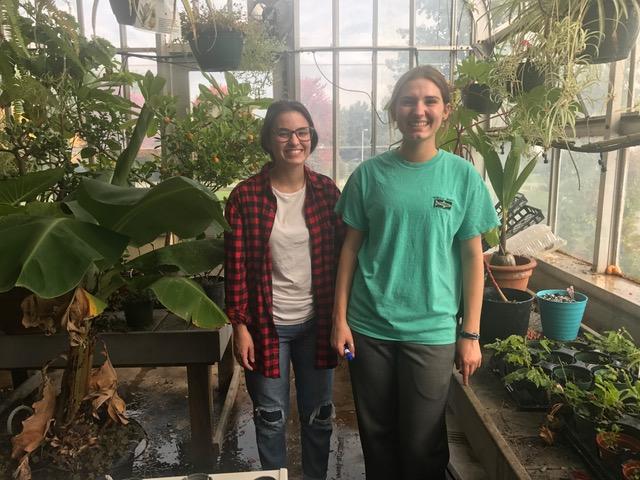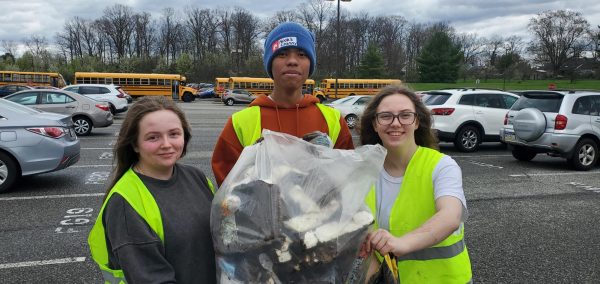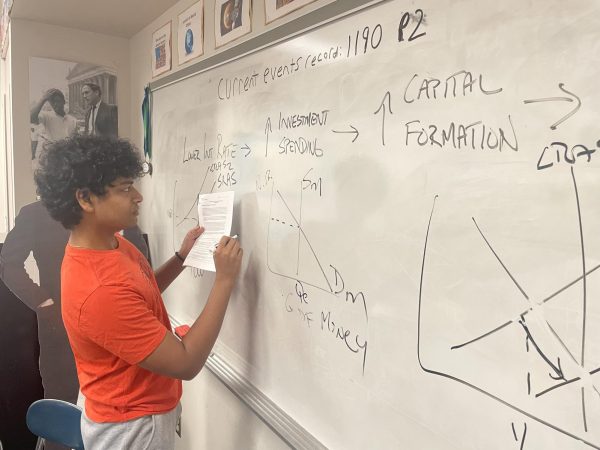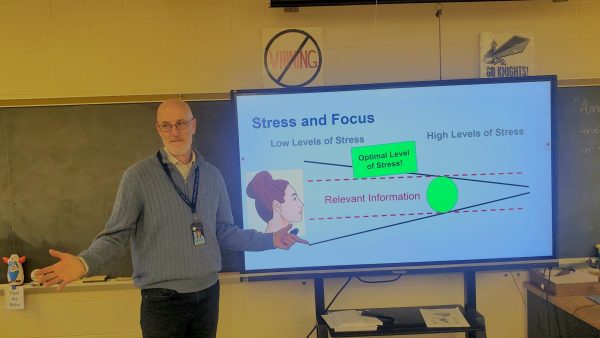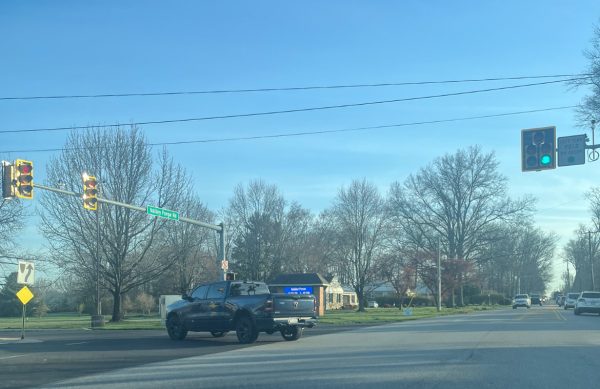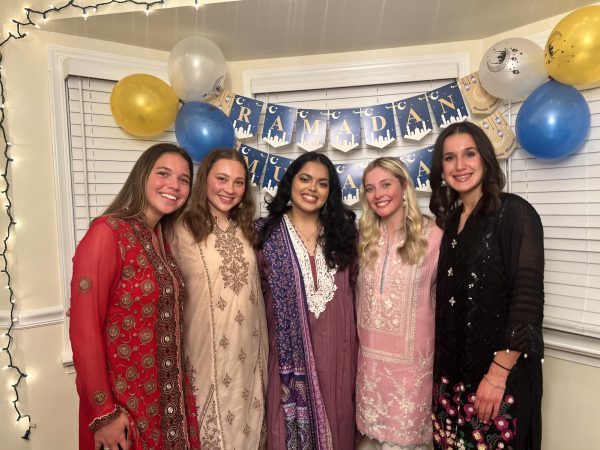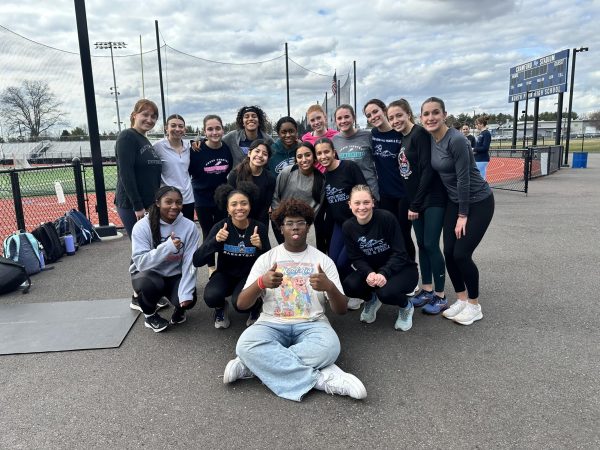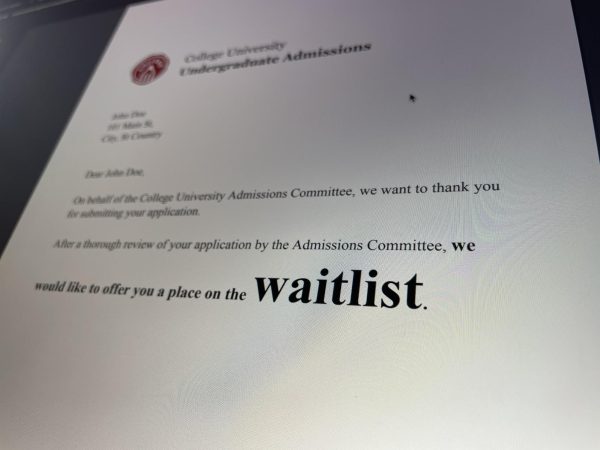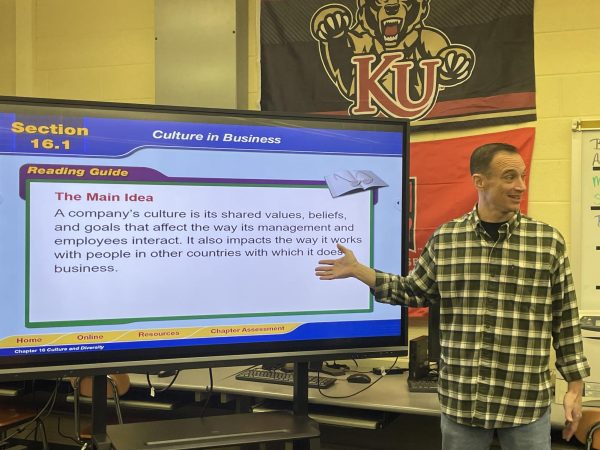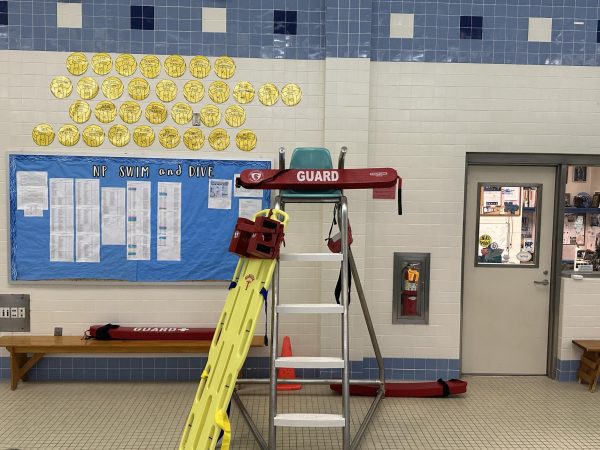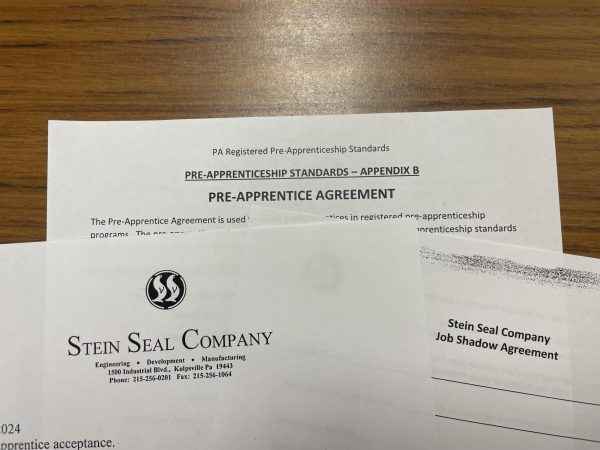Exploring the growing seas of marine science and botany
Andrea Canavan, left, and Mikala Camburn, right, posed for a photo in NPHS’s greenhouse during 9th period, as they worked on their projects and prepared for the programs’ club meeting. (Not pictured: Sean Rice, work study student)
TOWAMENCIN – The marine science and botany programs at NPHS were practically nonexistent about ten years ago. However, with an influx of new energy from NPHS science teachers Shane Misuro, who inherited the marine science program, and Daniel Krueger, who inherited the botany program, the two programs have developed over the years, illustrating the capacity of their potential to flourish among the student body.
“At that time, there was nothing,” explained Misuro. “There was a greenhouse that wasn’t being used, no tanks, no nothing. What we did was, over ten years, slowly but surely, made a class, then a club, and then a work study program. We just built it up slowly, and now it’s exploding at the rafters. We are now bursting at the seams, and we are only getting bigger.”
Both majoring in biology, Misuro, a graduate from La Salle University with experience working in a lab for the Army, and Krueger, a graduate from Kutztown University, further cultivated their passion for science when they arrived at NPHS. Misuro explained that the two envisioned success for the programs.
“We both had experience in science where you try ten-thousand things and nothing works,” stated Misuro. “Then, you try something that works, and you stick with it. That was the approach we did. We got these classes; we were interested in them and interested in opening up more hands on stuff for them. Over ten years, slowly but surely, we did it.”
When the educators initiated the process of expanding the programs, they realized that the funds and materials supplied by the school were rapidly being exhausted. As a result, they made inquiries regarding grant opportunities and encountered the NPSD Educational Foundation. Misuro explained that after receiving their first grant for the programs, the Educational Foundation has continued to be the major source of their funding. Although not as significant, private and company donations have also added to the programs’ resources.
Because of the extent of the programs’ reach among the student body, Misuro stressed the importance of receiving the grants, as they impact the class itself, the club, and the work study students. Just as the grants are implemented in a way that allows a versatile advantage, Misuro explained an ideal strategy for students to involve themselves in all aspects of the programs.
“If we were going to groom work study students, you would come as a sophomore, and you’d join the club,” stated Misuro. “As a sophomore in the club, you would be introduced to doing these projects and getting to work. You would work with more experienced club members or the work study students themselves, and you would get into projects. Then, you would come back as a junior, and you would take either botany or marine science as an elective course. As a senior, you would become a work study student.”
Demonstrating a major advancement, Misuro stated that the 2016-2017 academic year is the first in history to see three work study students for the marine science and botany programs. Although Misuro and Krueger are instructing during the scheduled 7th and 8th period work study periods, Misuro commended the three students, Mikala Camburn, Andrea Canavan, and Sean Rice, on their teamwork skills, flexibility, and understanding of the programs.
Camburn, who works with the freshwater component of the programs, explained how the privilege of independence has impacted her ability to succeed as a work study student.
“Sean and I make our own schedule and pretty much decide what we do,” explained Camburn. “We create what projects we want to execute, run it by Misuro and Krueger, and they help us along with it, like the materials we need and then through in their ideas. So every day we just do basic things, like checking water, but after that, we get to do more fun things, like design tanks we want.”
Adding to their involvement in the work study program, the three students have the ability to help Misuro and Krueger write the grants for the programs. Misuro explained he and Krueger have open discussions with the three students regarding grant applications; the group works as a team to compile a list of what is needed and review, deliberate, and justify any add-ons or changes. As each person signs off with their approval, the student input proves to be just as crucial to that of the educators’.
Canavan, who works with the botany component of the programs, explained that she associates her success as a work study student as a result of the opportunities that the grants have presented.
“The grants are the whole reason why I am able to have the sky as my limit,” said Canavan. “I wouldn’t be able to do what I do without them for even basic reasons. There are so many supplies that I need daily to grow and take care of the plants and my existing projects. So, when I run out of a certain type of soil, I never have to worry about to being able to order more. And when some projects don’t work out the way I originally planned, I am able to change and make a new design without feeling like it’s ruined and I have to give up. I can keep making progress and learning without having to worry about anything.”
Canavan also explained that she is currently working on a grant proposal due on November 18th. Because of the specific outline that the grant application presents, Canavan discussed the importance of efficiently planning the entire project beforehand.
“I also need to have the majority of the project planned out so that I can list what I will need and an estimate of how much money each item costs,” stated Canavan. “But there’s also the waiting game to see if the grant even gets approved, which it usually does, but you always worry that it won’t be. It’s actually a really amazing opportunity to basically be able to plan out your own course. You brainstorm your own projects, research, and plan it out, then create. I have never before been in a class that the teacher allowed me to choose what I wanted to do with my time and what I wanted to learn about. I don’t think that I have ever problem solved so much before in my life.”
The problem solving aspect of the work study program that Canavan mentioned is one of the concepts that Misuro emphasized a great deal of importance.
“The most important lesson I think we teach work study students and everyone, and it’s something that we repeat over and over again, is that nothing ever works the first time,” stated Misuro. “Nothing ever works the first time. What I really like about the program is the program is a lot less, this is what I want to do, and a lot more that didn’t work, what didn’t work about it, and how can we work the problem to get it to work in the future.”
Discussing the most rewarding part of her experience, Camburn revealed that she discovered some hidden talents as a result of operating as a work study student.
“I’ve never thought that I could accomplish half the things I’ve been able to, and without the program, I don’t think any of the things I’ve done would be achievable,” stated Camburn. “It’s such a learning experience, and I’m so happy I’m able to be part of it.”


